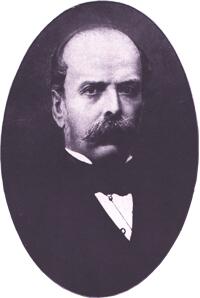
Filippo Pacini
Academic
1812 – 1883
Who was Filippo Pacini?
Filippo Pacini was an Italian anatomist, posthumously famous for isolating the cholera bacillus Vibrio cholerae in 1854, well before Robert Koch's more widely accepted discoveries thirty years later.
Pacini was born in Pistoia, Tuscany to a humble family, but was given a religious education in hopes that he would become a bishop. However, in 1830 he was given a scholarship to the most venerable medical school in Pistoia. He learned his trade as a physician, and learned to dissect and examine bodies with a microscope.
In 1831, during a dissection class, Pacini discovered small sensory organs in the nervous system which can detect pressure and vibrations. He studied them closely from 1833 on, and first discussed them in 1835 at the "Società medico-fisica" in Florence, but did not publish his research until 1840. Within just a few years, the work was widely known in Europe and the bodies had become known as Pacinian corpuscles.
He served as an assistant to Paolo Savi in Pisa from 1840 to 1843, then began working at the Institute of Human Anatomy. In 1847 Pacini began teaching at the Lyceum in Florence, and then was named chair of General and Topographic Anatomy at the "Istituto di Studi Superiori" at the University of Florence in 1849, where he remained to the end of his career.
We need you!
Help us build the largest biographies collection on the web!
- Born
- May 25, 1812
Pistoia - Religion
- Catholicism
- Nationality
- Italy
- Lived in
- Florence
- Pistoia
- Died
- Jul 9, 1883
Florence
Submitted
on July 23, 2013
Citation
Use the citation below to add to a bibliography:
Style:MLAChicagoAPA
"Filippo Pacini." Biographies.net. STANDS4 LLC, 2024. Web. 25 Apr. 2024. <https://www.biographies.net/people/en/filippo_pacini>.

Discuss this Filippo Pacini biography with the community:
Report Comment
We're doing our best to make sure our content is useful, accurate and safe.
If by any chance you spot an inappropriate comment while navigating through our website please use this form to let us know, and we'll take care of it shortly.
Attachment
You need to be logged in to favorite.
Log In